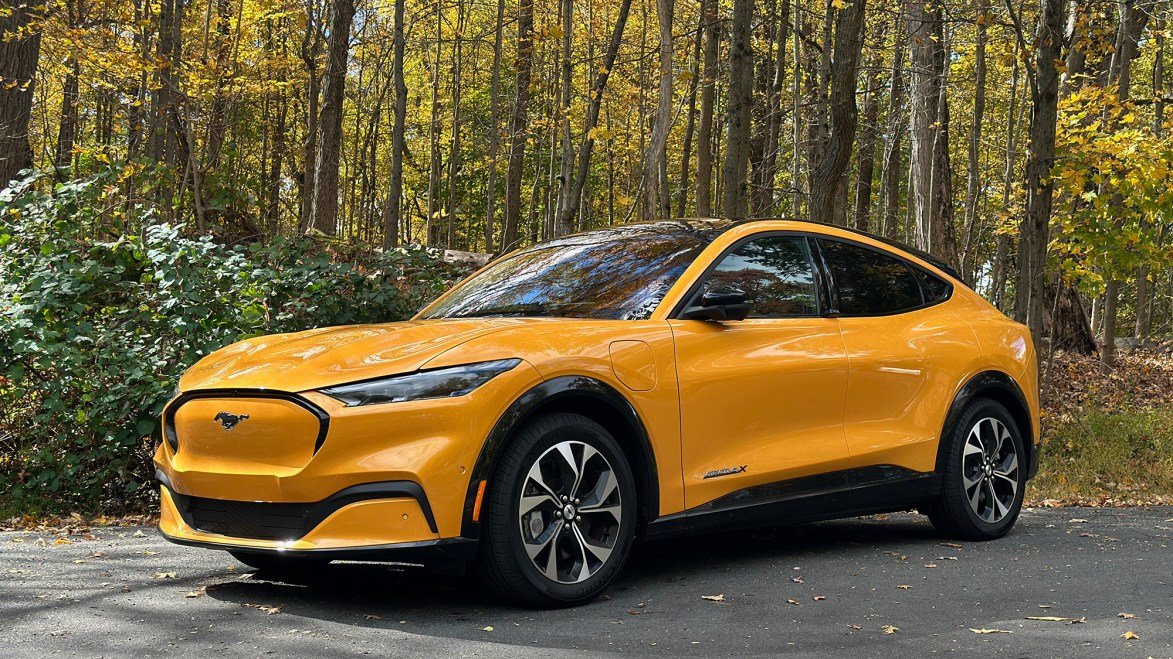Picture a bright Tuesday morning. The sun climbs over a city skyline. Millions of cars stream onto highways, a glittering river of steel and glass. Beneath the cheerful music on the radio, beneath the coffee steam fogging up windshields, there’s something unseen riding with us all: invisible clouds of carbon dioxide, swirling into an atmosphere already burdened by the weight of humanity’s ambitions.
We’re living in the age of climate change. The seas are creeping higher. Wildfires rage in places once thought safe. Heatwaves kill crops and people alike. The world’s scientists issue stark warnings: to keep Earth livable, we must cut greenhouse gas emissions — and fast.
Amid this urgent drama, the electric car has burst onto the scene, riding a wave of hope. Sleek. Silent. Futuristic. Free from tailpipes spewing black exhaust. Plug it in overnight, and drive off guilt-free in the morning. It sounds like the perfect solution.
But beneath the marketing glow, a thorny question remains: can electric cars really save the planet? Or are they just another illusion of progress while the clock keeps ticking?
The Allure of a Silent Revolution
It’s hard not to fall in love with the idea. Step into a Tesla Model 3, a Ford F-150 Lightning, or a sleek Polestar, and the future feels palpable. Tap the accelerator and the car surges forward, smooth as silk, torque instant and intoxicating. No rumbling engine. No shifting gears. Just quiet power.
For drivers weary of gas prices, exhaust fumes, and oil changes, the appeal is obvious. For climate advocates, the hope runs deeper: electric cars promise to slash emissions and help cool a feverish planet.
Governments around the world have embraced the idea. Norway plans to end sales of new gasoline cars by 2025. The European Union has vowed to ban new petrol and diesel vehicles by 2035. In the United States, President Biden has set a goal: half of new vehicles sold in 2030 should be electric. The momentum feels unstoppable.
Yet as with all technological revolutions, there’s a catch. Saving the planet isn’t simply about buying a new gadget. It’s about numbers — big, stubborn numbers written in tons of carbon, barrels of oil, and terawatts of electricity.
Under the Hood of Climate Change
To understand whether electric cars can save us, we must first look squarely at what we’re trying to save ourselves from.
In 2023, human civilization emitted about 40 billion metric tons of CO₂ into the atmosphere. Each ton traps heat like an invisible blanket. Over time, that warmth disrupts weather, melts glaciers, and nudges sea levels ever higher.
Transportation is one of the giants in this carbon landscape. Globally, cars, trucks, ships, and planes account for roughly 24% of energy-related CO₂ emissions. In the United States, transportation is the single largest emitter, outpacing even power plants and industry.
Cars alone produce billions of tons of CO₂ every year. A typical gasoline car emits about 4.6 metric tons of CO₂ annually, just from burning fuel. Multiply that by a billion cars on Earth’s roads, and the scale of the problem becomes blindingly clear.
If we could magically replace every gas car with an electric one overnight, could we slash emissions enough to save the planet?
The truth is… it’s complicated.
Electric Cars: Emissions Aren’t Zero
When people call electric cars “zero-emission vehicles,” they’re talking about the tailpipe — or rather, the lack of one. An EV doesn’t burn gasoline. It doesn’t cough out exhaust in rush-hour traffic. From the driver’s seat, it feels like a guilt-free ride.
But climate change doesn’t care about the location of emissions. It cares about total emissions, cradle to grave. And the reality is that building and powering electric cars still produces carbon. Sometimes a lot of it.
First, consider manufacturing. An EV battery is a marvel of modern chemistry, stuffed with lithium, cobalt, nickel, and other metals mined, refined, and transported across continents. Producing a typical EV generates about 40% more emissions upfront than building a gasoline car, mostly because of the battery.
A 2021 study by the International Energy Agency (IEA) found that manufacturing a mid-sized EV produces roughly 8-10 tons of CO₂, compared to about 5-6 tons for a gasoline car. So before it even hits the road, an electric car starts with a carbon “debt.”
But the real battleground is what happens next: how the car is driven, and what powers the grid.
A Tale of Two Grids
Imagine two identical Teslas rolling off the same factory line. One ships to Norway, a country blessed with hydropower. The other heads to Poland, where coal still dominates electricity production.
The Norwegian Tesla charges on nearly carbon-free electrons. Over its lifetime, it will emit far less CO₂ than any gasoline car. The Polish Tesla, however, charges on coal-fired power. It’s still cleaner than a gas car, but the margin shrinks dramatically.
A landmark 2021 study by the IEA found that even in coal-heavy regions, electric cars tend to emit 20-30% less CO₂ over their lifetime than gasoline vehicles. But in places with clean grids, the savings skyrocket to up to 70-80% lower emissions.
It’s a vivid reminder that the promise of electric vehicles is intertwined with the future of our power plants. Electrifying transport only saves the planet if the grid itself goes green.
The Battery Conundrum
Batteries lie at the heart of the EV revolution. They’re also its Achilles’ heel.
Lithium-ion batteries require metals mined in sometimes troubling conditions. Cobalt, a key component, often comes from the Democratic Republic of Congo, where child labor and hazardous working conditions remain major concerns. Lithium mining, meanwhile, consumes vast amounts of water, creating conflicts in arid regions like Chile’s Atacama Desert.
Environmentalists fear that a global rush for battery minerals could leave behind ecological scars. The solution, many believe, lies in recycling — recovering valuable metals from old batteries. Yet battery recycling remains in its infancy. Facilities exist, but on nowhere near the scale needed for a global EV fleet.
Moreover, the carbon footprint of mining, refining, and assembling batteries remains significant. Advances are coming: battery chemistries are evolving, reducing the need for cobalt and increasing energy density. But for now, batteries remain both a technological miracle and a planetary headache.
Electric Cars vs. Public Transit
The climate crisis forces us to look beyond the question of gasoline vs. electricity. It pushes us to ask a more fundamental question: how much driving do we actually need?
Some environmentalists warn that electric cars risk becoming a seductive distraction — a way for affluent societies to preserve the same car-centric lifestyles that helped fuel the climate crisis in the first place. A Tesla in every driveway does little to reduce congestion, urban sprawl, or the sheer volume of roads slicing up landscapes.
Studies show that reducing total vehicle miles traveled may have a bigger climate benefit than simply swapping gas cars for electric ones. Public transit, biking, walking, urban density — these solutions slash emissions and create healthier, more livable cities.
In places like Amsterdam, Copenhagen, or Tokyo, fewer people drive not because they lack technology, but because cities are designed for human beings, not just cars.
Still, for many communities — especially in sprawling suburbs or rural regions — cars remain essential. For these drivers, electrification remains the clearest path to lower emissions.
The Grid Can Handle It… For Now
Critics often raise a fair question: if millions of people plug in electric cars, will the grid collapse?
So far, the answer is reassuring. Studies from the U.S. Department of Energy suggest that even with 50% of all cars going electric, overall electricity demand would rise by about 15-20%. That’s manageable over a decade, especially if charging happens at night when demand is low.
Moreover, EVs could become part of the solution. Future electric cars may act as mobile batteries, storing solar or wind energy during the day and feeding it back to the grid when needed. In California, pilot programs already allow Ford F-150 Lightnings to power homes during blackouts.
But the challenge is real. In regions with fragile grids — parts of Texas or California — a surge in EV adoption will require significant investment in infrastructure and renewable capacity.
The Economics of Electric Dreams
Price remains one of the biggest barriers. A new electric car still costs more upfront than a comparable gasoline model, though falling battery prices are closing the gap.
Yet over time, electric cars tend to be cheaper to own. Electricity often costs less per mile than gasoline. EVs have fewer moving parts, meaning lower maintenance bills. No oil changes. No exhaust systems to rust out.
By some estimates, owning an EV can save drivers $6,000 to $10,000 over the car’s lifetime. But that savings only matters if you can afford the higher purchase price in the first place.
Governments are stepping in with tax credits and incentives. The U.S. offers up to $7,500 for new electric vehicles. The European Union has similar programs. Still, many lower-income families remain priced out of the electric revolution.
And the used EV market remains small. For now, electric cars remain disproportionately clustered in affluent zip codes — a climate solution still out of reach for millions.
Global Inequities
While electric cars race ahead in Europe, China, and parts of North America, billions of people around the world drive older vehicles or can’t afford a car at all.
In India, Indonesia, and large swaths of Africa, motorbikes and small cars dominate the roads. Electrifying these markets will require low-cost solutions, including electric scooters and small, affordable EVs.
Meanwhile, countries rich in fossil fuels — Saudi Arabia, Russia, parts of the U.S. — face political and economic obstacles to abandoning gasoline. The road to a global EV fleet will be neither smooth nor evenly paved.
A Glimpse of Tomorrow
Yet progress is undeniable. In 2012, electric cars made up barely 0.2% of new car sales worldwide. In 2023, they hit over 18% globally. In China, one out of every three new cars is electric. Even in the U.S., once lagging, EV sales crossed 9% of new vehicles in 2023.
The tipping point is coming faster than many predicted. Analysts once forecast EVs would remain a niche market for decades. Now, major automakers — GM, Ford, Volkswagen, Mercedes-Benz — have pledged to go all-electric within the next 10 to 20 years.
Battery prices have fallen more than 80% since 2010. Range anxiety, once the bane of EV ownership, is fading as new models offer 300-400 miles on a single charge.
Still, the path to a fully electric fleet is long. Even if all new cars sold in 2035 are electric, billions of gasoline cars will remain on the roads for another decade or two. The climate clock doesn’t wait.
The Numbers Speak
So… can electric cars save the planet?
Crunch the numbers, and the answer is neither a simple yes nor a cynical no. Here’s what the real math shows:
- An electric car, even with today’s batteries and imperfect grids, cuts lifetime emissions by roughly 20-70% compared to a gasoline car, depending on where you live.
- A global shift to electric cars could slash gigatons of CO₂ from the world’s annual carbon footprint — essential if we hope to avoid catastrophic warming.
- Yet electric cars alone won’t solve climate change. We must also decarbonize electricity, redesign cities, and reduce overall driving.
Electric cars are not a silver bullet. But they are a powerful tool — perhaps the most significant technological weapon we have in the transportation sector’s fight against climate change.
The Human Equation
Beyond the numbers lies something deeper: the human story.
In 1900, the world was poised between horses and automobiles. The horse had been humanity’s main transport for millennia. Yet in just two decades, cars reshaped cities, economies, and entire ways of life.
We stand on the cusp of another transformation. In 2050, future generations may look back and wonder how we ever tolerated traffic roaring with smoke and gasoline fumes. They might see our era as the twilight of the combustion engine.
But the choices we make in the next ten years will decide whether that new era arrives in time to avert the worst consequences of climate change.
A Road Ahead
I think of the young father plugging in his Chevy Bolt before dawn. The city dweller who trades her second car for a bicycle and a transit pass. The engineers racing to make batteries cheaper and cleaner. The activists demanding policies that match the scale of the crisis.
They are all part of the same story: humanity’s attempt to solve the greatest problem we have ever faced.
Can electric cars save the planet? Not alone. But without them, the road ahead looks far bleaker. They are one piece of the puzzle — a necessary piece, though not the whole picture.
The promise is real. So are the challenges. But one thing is certain: the world cannot afford to keep idling in neutral.
Some revolutions begin with fireworks. Others begin in quiet driveways, with a soft click as a plug slips into a socket — and the hope that the road ahead might just lead us home.






